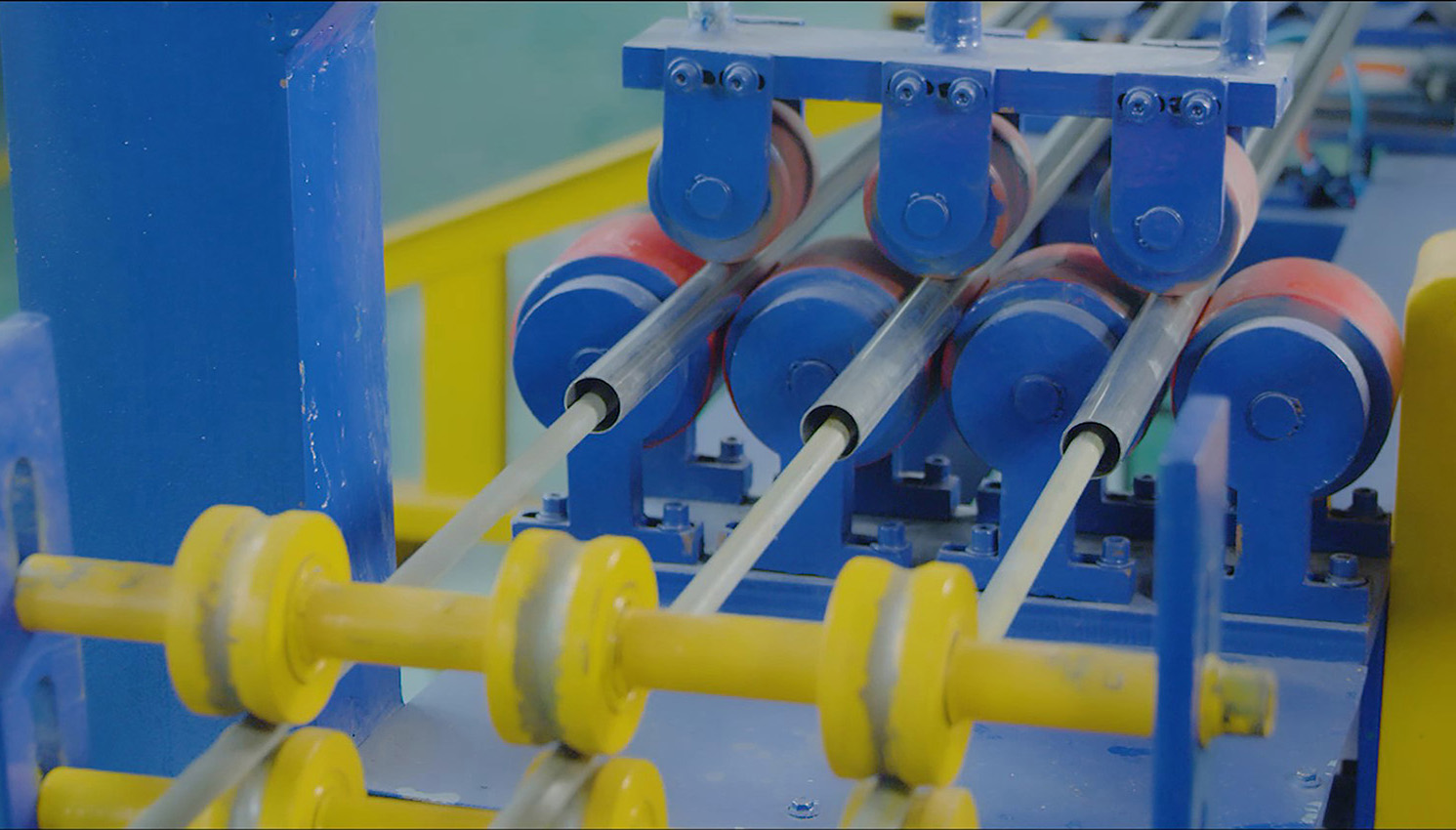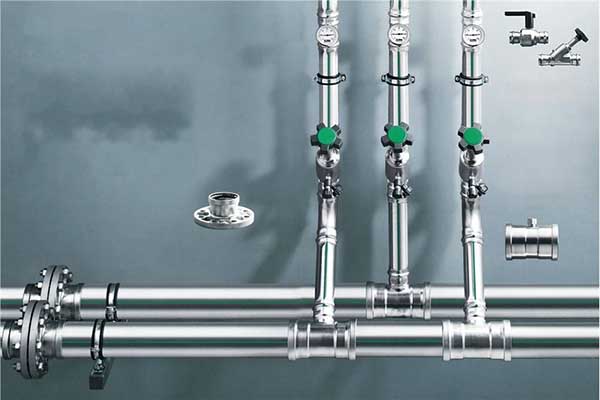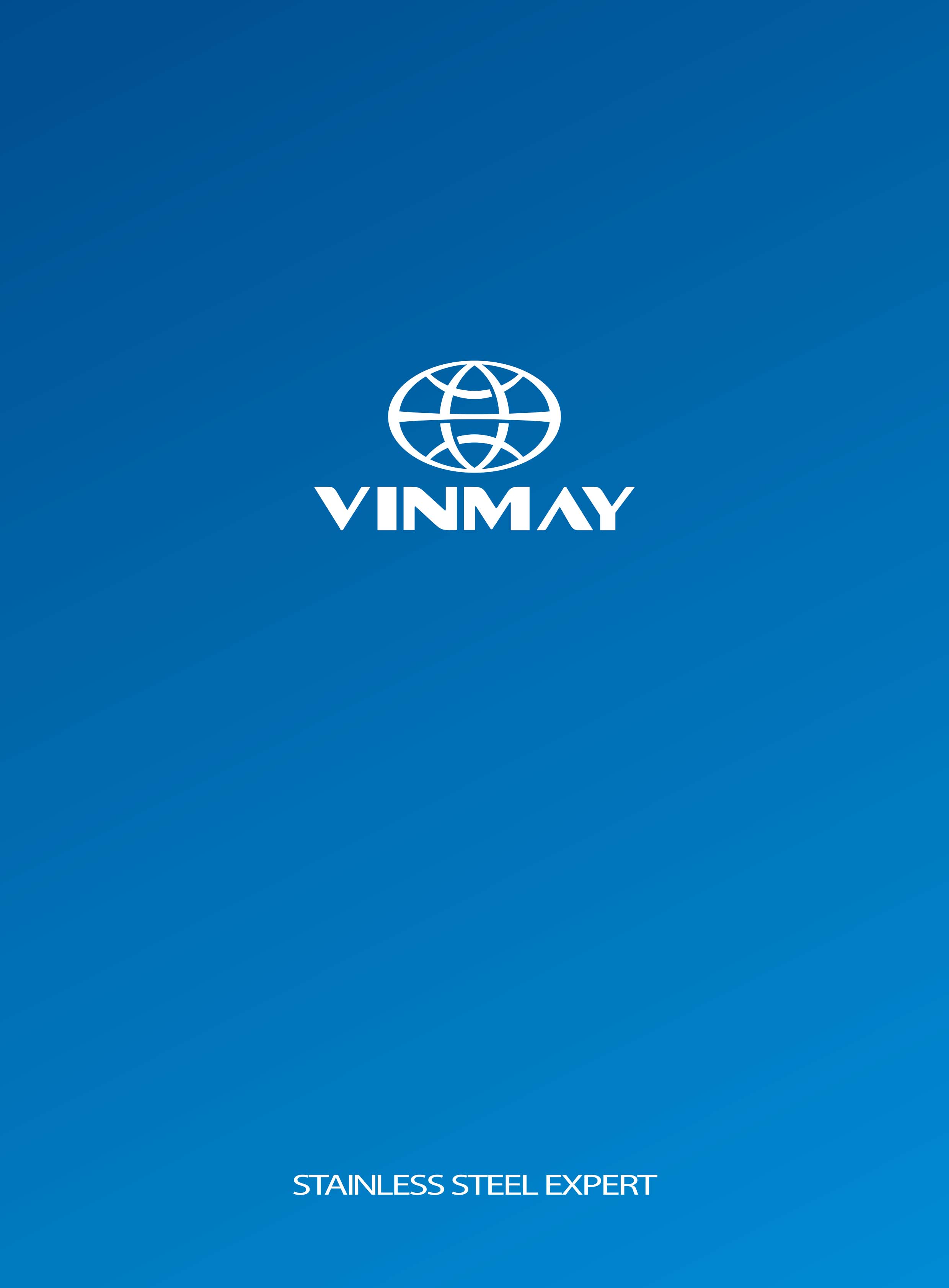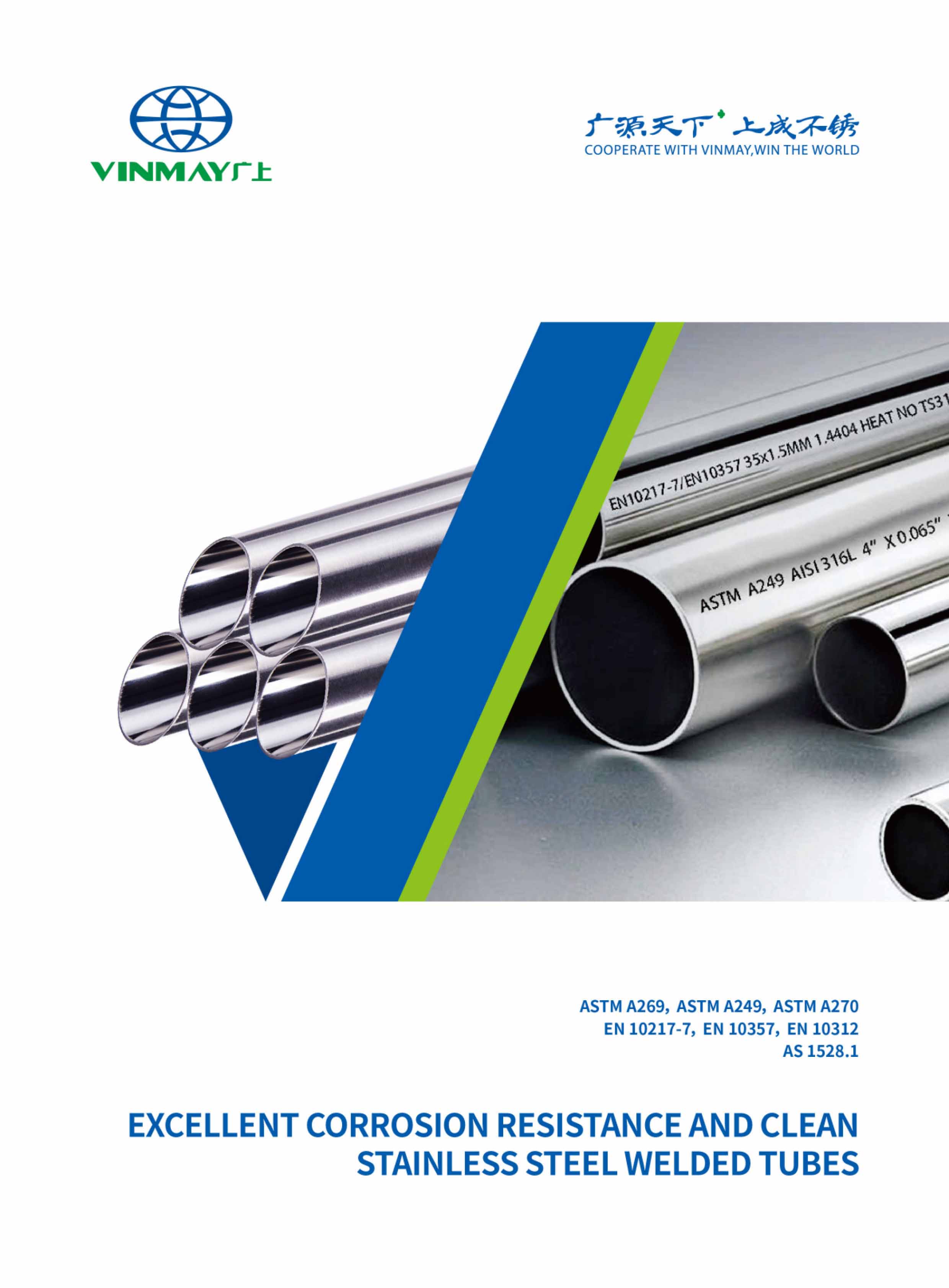Did you know that Stainless Steel Welded Round Tubes go through a precise manufacturing process to ensure their strength and durability?
These tubes offer a wide range of applications, from industrial to everyday projects, thanks to their corrosion resistance and ease of customization.
But have you ever wondered about the differences between the common grades of stainless steel used in these tubes?
Stay tuned to uncover the key distinctions between 304 and 316 stainless steel tubes and how they can impact your project's success.
When considering the various stainless steel welded round tube options available, it's essential to pay attention to industry standards like A269, A554, A270, A249, and EN10312.
These specifications ensure that the tubing meets the required quality and performance stainless steel tube standards for different applications.
Understanding the standards associated with stainless steel welded round tube can help you make informed decisions when selecting the most suitable option for your specific needs.

When considering the A269 Stainless Steel Welded Round Tube, you'll find various applications where it can be utilized effectively.
The production process plays a crucial role in determining the quality and suitability of the tubing for specific uses.
Understanding the applications and production nuances will guide you in making informed decisions for your project requirements.
Manufactured to industry specifications standard A269, the welded stainless steel round tube offers versatile applications across various industries due to its superior corrosion resistance and durability.
Common uses include heat treatment machine , such as boiler , heat exchanger and condenser
Ideal for industrial and construction this tubing is easy to work with, providing strength and reliability for structural applications.
After discussing the versatile applications of stainless steel welded round tube in various industries, let's now explore the production process of this tubing manufactured to industry specifications standard A269.
Stainless steel welded round tubes are manufactured by roll-forming strips or sheets of stainless steel, longitudinally seam welding them. The process can be hot-forming or cold-forming, with cold forming resulting in smoother finishes and tighter tolerances. The inside bead removing is an important production process of it.
When considering A554 Stainless Steel Welded Round Tube, you'll find it suitable for various applications due to its structural grade construction.
The production process involves seam welding stainless steel strips longitudinally, offering a cost-efficient option with smooth finishes.
Stainless Steel Welded Round Tubes, meeting industry standards as per A554 specifications, find widespread utility in various applications due to their durability and versatility.
This tubing is commonly used in architectural, automotive, furniture , sanitary ware , marine and handrail. etc

Stainless Steel Welded Round Tube Manufactured to Industry Specifications Standard A554 for Round Tubes undergoes a meticulous production process ensuring quality and reliability for various applications.
The stainless steel strips or sheets are roll-formed, longitudinally seam welded, and can undergo hot or cold forming.
Cold forming results in smoother finishes and tighter tolerances, with additional refinement possible through cold rolling and forging methods for a high-quality end product.
After forming , the tube in ASTM A554 standard will be polished into different surface finish according to the different requiremts of the clients.
Discover More:
Exploring the World of Polished Stainless Steel Round Tubes
When considering A270 Stainless Steel Welded Round Tube, you'll find versatile applications and a detailed production process. This type of tubing caters to various needs across industries, guaranteeing reliability and durability.
Understanding its applications and production process will help you make informed decisions for your projects.
Manufactured to industry specifications standard A270, the stainless steel welded round tube excels in various structural and aesthetic applications.
Learn More:
Diverse Applications of Sanitary Stainless Steel Pipe
ASTM A270 stainless steel welded round tubes also called stainless steel sanitary tube are commonly used in food industry , beverage industry, chemical industry , purified water industry , biological engineering industry , electronic enginneering industry etc.

In the production process of the A270 Stainless Steel Welded Round Tube, stainless steel strips or sheets are roll-formed to create the tubing. The stainless steel is then longitudinally seam welded to ensure structural integrity.
Base on the production process of ASTM A554 (welding and polishing), the bright annealing process is performed in a controlled atmosphere containing inert hydrogen gas at 1040°C. Annealing is typically used to reduces ductility and eliminate internal stresss. While the controlled atmosphere reduces the surface oxide layer. Pickling is not needed after bright anneling sicne the oxidation is minimal. Since there is no pickling , the surface is much smoother which results in better resistance to pitting corrosion. On the other hand, inside bead removing and internal polishing is also the two important production process of ASTM A270.

When considering A249 Stainless Steel Welded Round Tubes, you'll find a wide range of applications suitable for this tubing.
ASTM A249 stainless steel welded round tube mainly apply in boiler, heat exchanger , supper heater and condenser which are widely used for the industries like petroleum, chemical paper, fertilizer and nuclear.

ASTM A249 stainless steel welded round tubes are then formed through welding and annealing . Surface treatments such as pickling, passivation, or polishing are applied to achieve the required surface finish.

Manufactured to industry specifications standard EN10312, the stainless steel pipe for water is commonly utilized in drinking water, hot and cold water, heating , air conditioning , gas , oil pipelines, rainwater drainage, etc.

The production involves precision welding of stainless steel strips or sheets, ensuring a strong longitudinal seam. This process can be either hot-forming or cold-forming, with cold forming providing smoother finishes and tighter tolerances. Anneaing , inside bead removing and inside polishing are also the important processes ot EN10312 Tubes.
Further refinement through cold rolling and forging enhances the stainless steel welded round tube's quality.
When choosing a common use grade of stainless steel welded round tube, you'll likely encounter options from the 300 Series and 400 Series.
These series offer different properties and characteristics that cater to various applications and industries.
Understanding the distinctions between the 300 and 400 Series will help you select the most suitable stainless steel welded round tube for your specific needs.
304 309 310 316 317 321
When considering the common use grades of stainless steel welded round tubes, you'll often come across the 430 and 409 series.
When choosing between 304 and 316 stainless steel tubing, consider factors like workability and mechanical properties.
304 stainless steel is known for its corrosion resistance and ease of sanitization, while 316 stainless steel offers greater resistance to chloride and chemicals.
Understanding the workability and mechanical properties of each type of stainless steel tube materials will help you select the best stainless steel tubing for your specific application.
Considering the workability of 304 and 316 stainless steel tubing, understanding the differences in machinability and fabrication properties is essential for selecting the most suitable option for your project needs.
304 stainless steel tubing is easier to machine than 316 stainless steel. It offers good corrosion resistance and is ideal for applications where exposure to harsh chemicals is limited.
On the other hand, 316 stainless steel tubing is more challenging to machine due to its increased hardness. It provides superior corrosion resistance, making it suitable for environments with chloride or chemical exposure.
When choosing between the two, evaluate the specific requirements of your project to determine which stainless steel tubing will offer the best workability and performance.
Recommend:
Is 304 Stainless Steel Surgical Grade?
What Is Food Grade 304 Stainless Steel?
Comparing the mechanical properties of 304 and 316 stainless steel tubing can help in determining the ideal option for your specific project requirements.
304 stainless steel tubing offers good corrosion resistance and is suitable for various applications, particularly in building and decorative projects.
On the other hand, 316 stainless steel tubing provides enhanced resistance to chloride, chemicals, and solvents, making it a preferred choice for industrial, surgical, and marine applications where exposure to harsh environments is a concern.
Understanding the differences in strength, durability, and chemical resistance between these two grades can guide you in selecting the most suitable stainless steel tubing for your project, ensuring optimal performance and longevity.
When deciding between welded and seamless stainless steel tubing, you'll need to consider factors like strength, corrosion resistance, and cost-efficiency.
Seamless tubing, lacking welded seams, offers superior strength and corrosion resistance, making it ideal for demanding applications like oil and gas.
On the other hand, welded tubing is cost-effective, readily available in long lengths, and suitable for various industries such as automotive and food and beverage.
For manufacturing seamless stainless steel tubing, an extrusion process is utilized to create tubes without a welded seam. This method involves heating billets that are then formed into hollow molds. These molds are drawn through a mandrel rod, elongated, and further shaped through processes like pilfering, cold rolling, or cold drawing.
The seamless tubing produced through this process is known for its strength, superior corrosion resistance, and higher pressure resistance. It finds applications in various industries such as oil and gas, chemical processing, and fluid and gas transfer.
Seamless tubing is particularly beneficial for applications requiring heavy walls, as it can achieve thicker walls more easily compared to welded tubing.
To understand the differences between welded and seamless stainless steel tubing, let's explore the manufacturing process of welded tubing and how it compares to seamless tubing.
Welded tubing is produced by roll-forming strips or sheets of stainless steel, where the seams are welded longitudinally. This process can be accomplished through hot-forming or cold-forming techniques. Cold forming tends to result in smoother finishes and tighter tolerances. Additionally, the seam in welded tubing can be further refined using cold rolling and forging methods.
While both welded and seamless tubing have their advantages, understanding the manufacturing variances can help you determine which type best suits your specific needs.
You may also like:
Stainless Steel Tubing Welding 101: Tips for Success
Stainless Steel Pipe Welding Procedure Specification
When selecting between welded and seamless stainless steel tubing, consider the advantages of seamless tubing such as superior strength and corrosion resistance.
Seamless tubing finds its applications in industries like oil and gas, chemical processing, and fluid transfer due to its high-pressure resistance.
Understanding these benefits will help you make an informed choice based on your specific project requirements.
Seamless tubing offers superior strength, corrosion resistance, and pressure capabilities compared to welded tubing in various industrial applications.
The absence of welded seams in seamless tubing enhances its durability and reliability, making it ideal for critical applications where high pressure and corrosion resistance are essential.
Additionally, seamless tubing provides a smoother interior surface, reducing the risk of turbulence and fluid contamination in demanding industrial environments.
With its superior strength, corrosion resistance, and pressure capabilities, seamless tubing finds widespread application across various industries, particularly in critical settings requiring high performance.
Seamless tubing is commonly used in oil and gas, chemical processing, and fluid and gas transfer applications where durability and reliability are paramount.
The lack of weld seams in seamless tubing enhances structural integrity, making it ideal for demanding environments.
When considering welded tubing, you'll find advantages like cost efficiency and availability in long lengths for various applications. Welded tubing is commonly used in architectural, automotive, food and beverage, marine, and pharmaceutical industries.
Its seamless counterpart, while offering superior strength and corrosion resistance, can sometimes be substituted by welded tubing in certain applications.
Manufacturing welded stainless steel tubing offers cost-efficient solutions for various industries, such as architectural, automotive, food, beverage, marine, and pharmaceutical sectors. Welded tubing provides a more budget-friendly option compared to seamless tubing.
It's readily available in long lengths, ensuring fast lead times for projects. The cold-forming process used in welding results in smoother finishes and tighter tolerances, meeting industry standards effectively.
For various industrial applications, welded stainless steel tubing offers a cost-efficient and reliable solution. Seam welding provides strength and durability suitable for architectural, automotive, food and beverage, marine, and pharmaceutical industries.
With fast lead times and availability in long lengths, welded tubing is a practical choice for structural applications like frame work, support columns, gates, and fencing. Its economical nature makes it a versatile option for a range of projects.
Comparing the costs between welded and seamless stainless steel tubing reveals distinct advantages and trade-offs based on specific project requirements and budget constraints.
Welded tubing is generally less expensive due to its simpler manufacturing process, making it a cost-efficient option for many projects. On the other hand, seamless tubing can be more costly, but this expense can be justified in smaller manufacturing runs or when heavy walls are required.
Seamless tubing is preferred for applications needing heavy wall thicknesses, offering superior strength in those cases. While welded tubing is readily available in long lengths with fast lead times, seamless tubing's benefits may outweigh the initial cost difference in certain specialized projects.
You may also like:
Stainless Steel Welding Issues Exploration
Deciphering the Dynamics: Unraveling Stainless Steel Round Tube Prices
In conclusion, stainless steel welded round tubes offer durability, versatility, and corrosion resistance for a wide range of applications. Whether you choose 304 or 316 stainless steel, you can trust in the strength and longevity of these tubes for your projects.
Consider the manufacturing processes, mechanical properties, and customization options available to find the perfect solution for your specific needs.
Request a personalized quote today and experience the benefits of stainless steel tubing in your next endeavor!
Foshan Vinmay Stainless Steel Co.,ltd is a manufacturer of stainless steel welded round tube which in ASTM A554, ASTM A249 / ASTM A269 , ASTM A270 and EN10312 Standard. As an ISO certificated supplier, Vinmay have exported to more than 100 countries which mainly in Europe and South America. If you are interested in stainless steel welded round tube , please feel free to contact us! Our professional sales team are waiting for you.



